A local Fox affiliate outed Tesla this week. A Tesla owner likely dropped a dime on the global leader in battery-electric vehicles (BEVs) when a parking lot full of frozen Teslas stranded at Tesla Superchargers enraged Tesla owners. Now, liberal pro-EV publications from NPR to the New York Times have repeated the story, with headlines hinting their content offers some added insight. Most of the outlets don’t employ an EV expert. I am one, I live in New England, and I have been testing EVs in harsh winter conditions on a regular basis for ten years. Here is the truth about EVs in winter.
Related Story: Here’s How Pro Testers Know If A Vehicle Is Good In Winter Ice and Snow
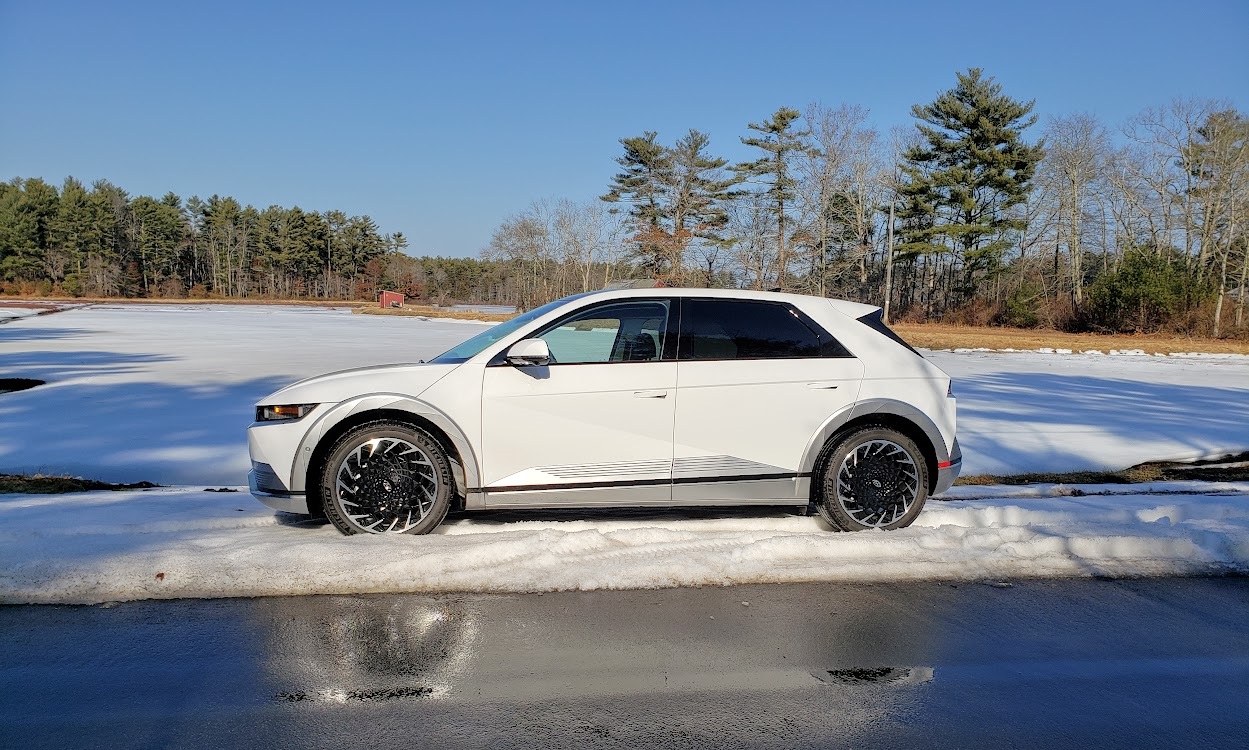
Battery-Electric Vehicle Winter Truths
In winter, owning a battery-electric vehicle is not ideal. There are better green vehicles to live with in winter. However, don’t mistake “not ideal” for “impossible to make work."
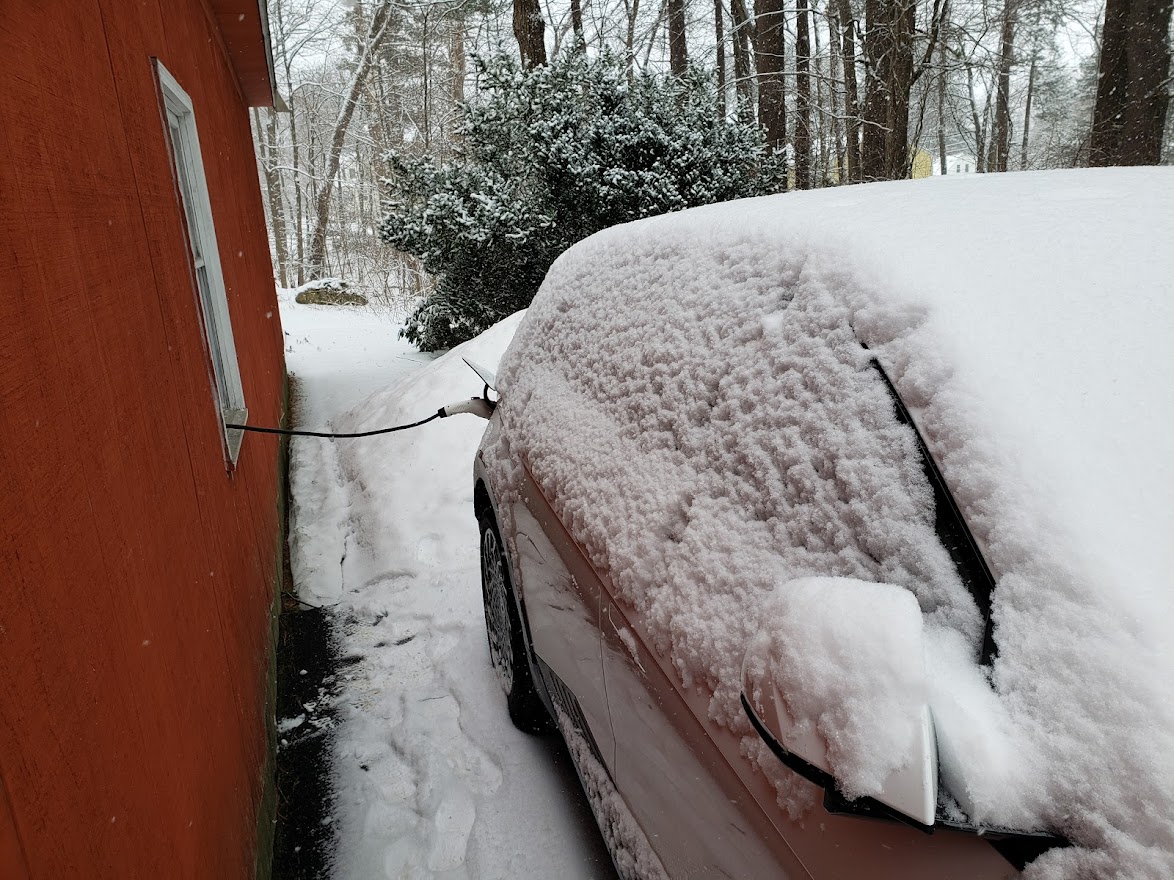
The Good News About BEVs In Winter
-Fully charged BEVs exiting your warm garage will do just fine on a cold winter day during normal driving.
-Yes, the heater saps energy. Yes, the cold makes the BEVs less efficient. Does that mean a BEV won't get you to and from work after charging all night at home? Of course not.
-There isn't just one type of electric vehicle. An AWD Hummer EV on winter tires is nothing like a 2WD Nissan Leaf EV on range-maximized hard-as-stone touring tires. How EVs drive in winter depends on the model, its specific powertrain (AWD or not), and the tires that have been fitted. Shop according to your winter driving needs, and your BEV will reward you.
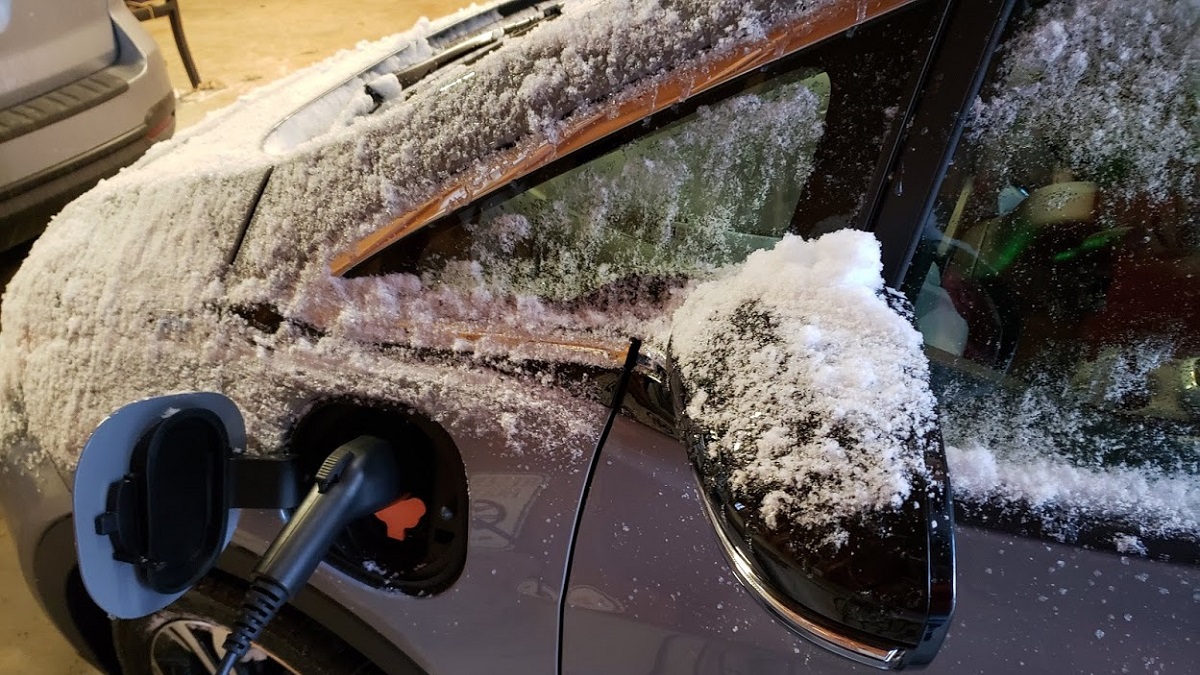
The Bad News About BEVs In Winter
-If you live in a cold climate and rely on public charging, you are going to have to baby your BEV. Your vehicle will become a problem in need of management instead of a useful tool that makes your life easier.
-Winter road trips in BEVs can be challenging. Public charging can add considerable time to the trip. Sure, you will make it. With a little more luck, the Donner Party would have made it, too.
-Charging in public is always a hassle. In winter, it is a true bummer. Charging takes much longer to input range.
-A cold BEV will lose roughly 20% to 40% of its range in winter. Relying on public DCFC charging to behave like a gas pump is unrealistic.
-Public chargers do freeze up. Even Superchargers. Inside EVs posted a story today which included, "We’ve known for quite some time now that extreme cold can freeze charging cables, connectors, and other critical components of a Tesla Supercharger (or any EV fast charger, really.)"
-Most BEVs have no spare tire. That means if you get a flat during an extreme weather event, you are now a liability to the community. Your in-trunk “mobility kit” will be frozen solid. You will need a tow on a day when a lot of folks will need roadside assistance. It may be days before you can get your tire fixed or replaced.
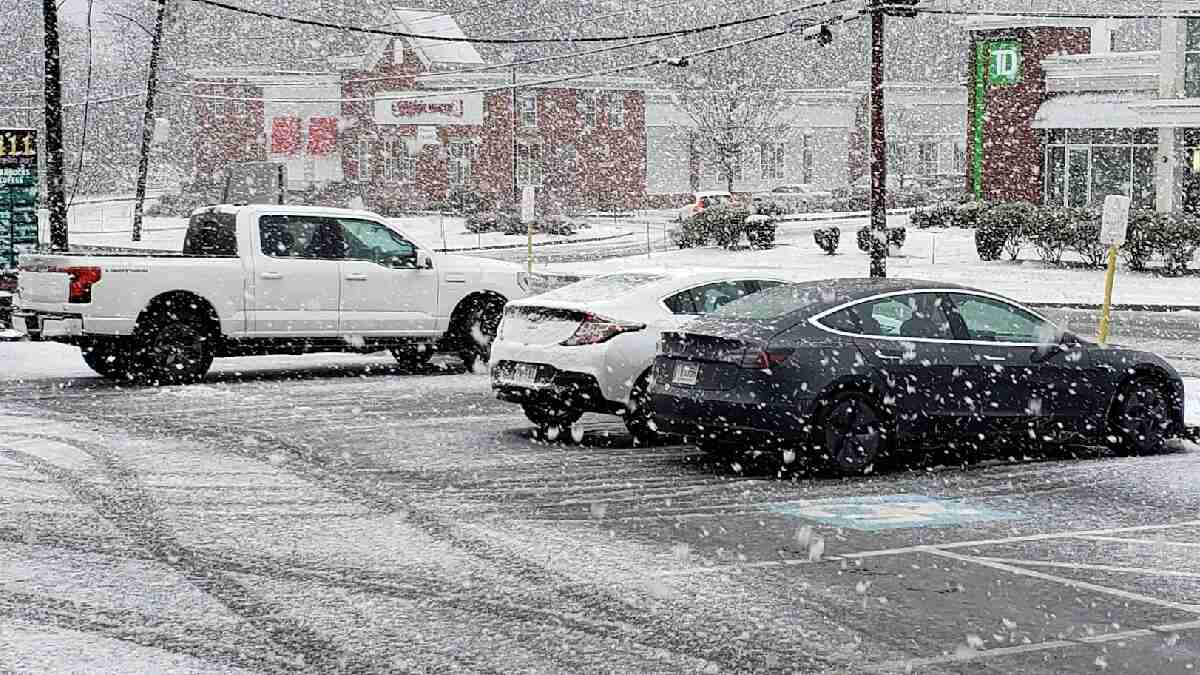
BEVs Are Ideal Second Cars
If you are affluent and can afford more than one vehicle, a BEV as one’s second vehicle is an excellent choice. Use your other vehicle that is not burdened with a battery-only powertrain to do all the wintery stuff, long-distance trips, and utility activities. However, if you are a one-car family without a home charger, you are swimming upstream by owning only a BEV. Winter just highlights this bad decision.
BEVs Work Great In Sunny California
A battery-only vehicle is a great vehicle in which to sit in California traffic. Unless it's traffic to Tahoe or one of the rare wintery bits of California. Many members of the EVangelist community either live in California or they live in big cities where, let’s face it, cars are a liability, not an asset. The place you reside colors your BEV ownership experience quite a bit.
The Big Internal Combustion Engine Vehicle (ICE) Lie
Nobody who writes about BEVs suffering in winter can resist dropping a comment like “ICE cars also have lower efficiency in winter.” This is untruthful on many levels. ICE cars I have tested for over a decade nearly all exceeded their EPA estimated mileage and range in winter. Keep your tire pressure at the correct setting, point your cold-soaked ICE car at a highway, and start driving like a grown up. You will find the ICE car will travel its full EPA-estimated range. As a business person on the road, I proved this to be true uncountable times in the U.S. and Canada. Start your trip in a cold-soaked BEV, and you will find it has a range of about 40% less than the EPA estimate. The video below has the proof.
If you wish to fabricate lies about ICE cars in winter, start the ICE car up, let it idle for ten minutes, then head into stop-and-go traffic for a short trip of a few miles. Next, take a picture of the MPG readout. It's a simple way to intentionally misrepresent how conventionally powered cars behave in winter. Well-maintained ICE cars have no meaningful reduction in range or usability when the temperature drops.
More Chargers Will Never Solve the BEV Dilema
Public EV chargers are more fragile than gas pumps. That is not going to change with injections of federal money. Charging in public is always going to be slower than gas pumps. Including the card swipe, filling a gas car with a 350-mile range from empty to full in winter takes about five to six minutes. There are no mainstream BEVs that have a winter range of 350 miles. Filling a BEV in cold weather from 10% charge to its full range capacity can take hours on most DC “Fast” Chargers. Even charging from 20% to 80% can take the better part of an hour in cold weather. Level 2 public charging is useless in winter.
The BEV Preconditioning Lie
Many EVangelists want you to think that there is a simple solution to the problem of BEV charging and range in winter. Simply “precondition” your battery. What this means is plug in and leave the car sitting plugged in until it is ready to drive. In public, this is simply not a thing. In your home, on your private charger, it works great. And it consumes electricity, which costs money and creates emissions. Warming up (preconditioning) BEV batteries is a hidden energy and money drain that Evangelists choose to ignore.
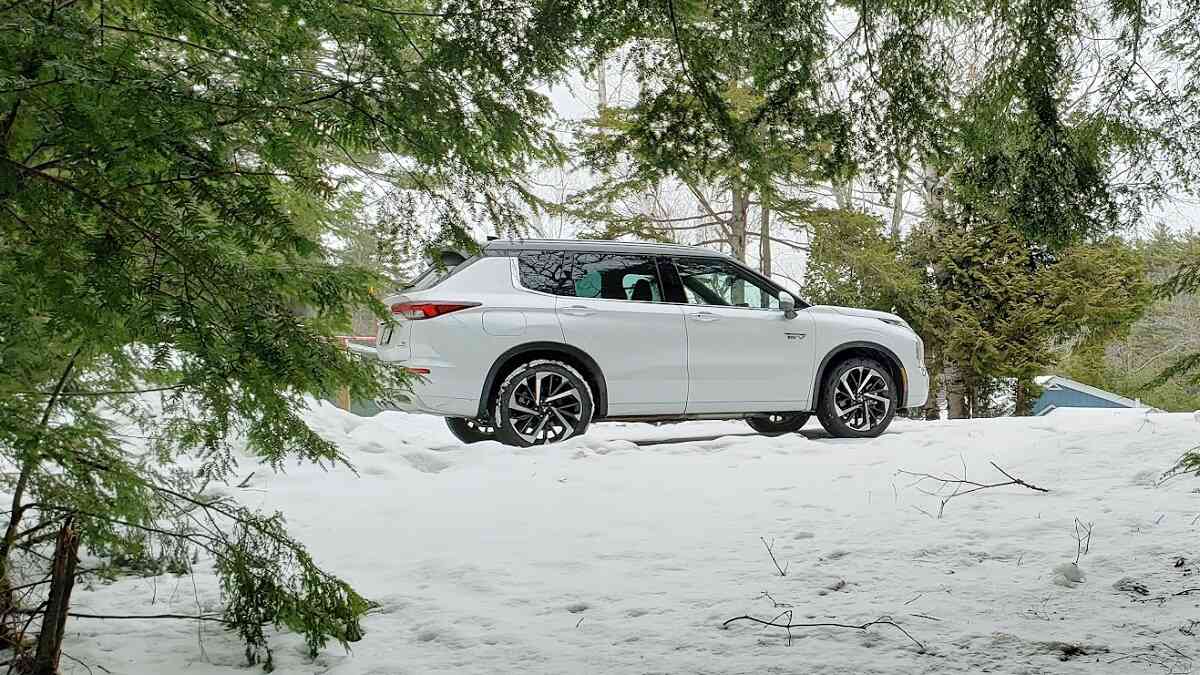
The EV That Has No Winter Hassles
If you want an electric vehicle that can do everything a conventionally-powered vehicle can in winter, simply buy a plug-in hybrid-electric vehicle. During the harshest days of winter, the PHEV will operate in hybrid mode. Your all-electric range will be diminished, but you will still have the full range available to you. You will still have heat, you will still have the ability to stop for 5 minutes and add back another 350 miles of range. Many PHEVs have spare tires. Many are AWD. When it is not harsh winter, nearly all the miles you travel will be electric. PHEVs solve all the wintertime BEV problems. Our winter test of the Mitsubishi Outlander PHEV is a good example of just how great an EV can be in winter.
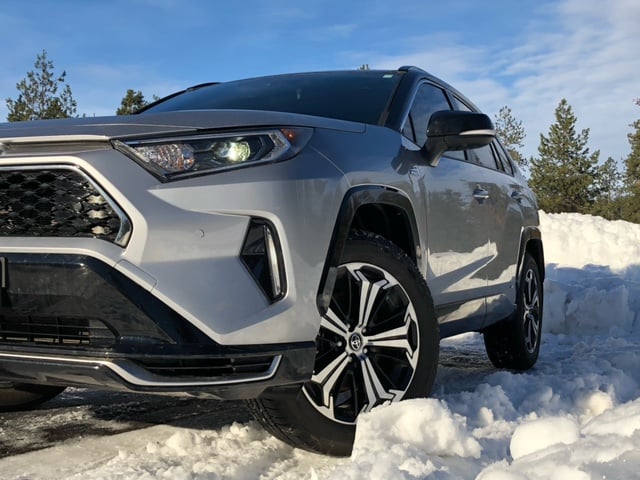
Conclusion - BEVs Are Not Best In All Scenarios
As a vehicle tester, I have gone out of my way many times to highlight that BEVs can be used in winter. In those same stories, I also try to offer better winter vehicle ideas for those who make green living a priority. The saddest part of this debate is that many EVangelists don’t want you to have a choice. They are first anti-liquid fuel advocates and second EV car enthusiasts. They are counting the days until BEV-only mandates will make the first part of their plan complete. Part two will be electricity rationing.
Hopefully, the day will come when battery-electric vehicle manufactures have solved the technology's inherent challenges. That day is not today. No technology being deployed in the foreseeable future will make BEVs the best choice for all drivers in every situation. As the frozen Teslas in a Supercharger lot have just illustrated, when winter hobbles electric vehicles, it is still a liquid fuel-powered truck that comes to the rescue.
Also see this video from the Torque News YouTube channel discussing range-killing and winter-specific mistakes Tesla and EV owners to with their cars.
John Goreham is an experienced New England Motor Press Association member and expert vehicle tester. John completed an engineering program with a focus on electric vehicles, followed by two decades of work in high-tech, biopharma, and the automotive supply chain before becoming a news contributor. In addition to his eleven years of work at Torque News, John has published thousands of articles and reviews at American news outlets. He is known for offering unfiltered opinions on vehicle topics. You can follow John on Twitter, and connect with him at Linkedin.
Winter EV Testing Photo Credits: Image of Nissan Leaf being tested in winter by John Goreham. Image of Hyundai Ioniq 5 being tested in winter by John Goreham. Image of Hyundai Ioniq 5 charging in winter by John Goreham. Image of Chevy Bolt being winter tested by John Goreham. Mitsubishi Outlander PHEV being tested in snow by John Goreham. Image of Ford F-150 Lightning being winter tested by John Goreham. Image of RAV4 Prime PHEV being driven in snow courtesy of owner Kate Silbaugh.













Comments
As a Chevy Bolt owner in the…
Permalink
As a Chevy Bolt owner in the upper Midwest, I find your comments about a BEV in winter accurate and thorough. I'm mystified, however, by the tone of hostility throughout toward "liberals." I am a liberal, but I don't recognize my politics in what you assert, and I don't see why you think it's helpful to frame your advice against a black-and-white backdrop of politics. You're offering good policy advice (BEVs cannot meet all private transportation needs, so don't impose them on everyone), but you're framing it in a way guaranteed to alienate those who need to hear it, but who may not be as open-minded and able to take an insult as I am. Sincerely yours, Clay Farris Naff
I had the opportunity to…
Permalink
I had the opportunity to borrow a friend's Tesla and years before that, a Leaf. I remember it was annoying to not be able to depend on them in the winter. I couldn't park them outside because they lose a lot of range and I always had to plug them in in the winter to make sure the range was maximized. This was the most annoying when I drive my car to see friends, hotels or public places. I can't tell if there will be charging for me, which made me anxious about travelling to unfamiliar places.
When I buy one, I'll make sure there is adequate charging facility and good power capacity in my city and destinations I like to drive my car to.
I live in Northern Maine and…
Permalink
I live in Northern Maine and knew the drawbacks of a BEV but still wanted the benefits. Looking for a 7 passenger vehicle to replace my Expedition I settled on the Chrysler Pacifica, a Plug in hybrid with 33 miles all electric range, just enough for local trips. I have a 500+ mile range in summer and 400+ in below 0 Temps. I have excellent heat which cuts the electric range from 33 to 20 but no worries when it kicks into hybrid mode. It's the best current alternative and as electric range increases in the future there's still room for smaller ICE.
You forgot to mention that…
Permalink
You forgot to mention that ICE vehicle lose range ALL WINTER due to federally mandated winter fuel blends.
electricity rationing??? lol.... buy some solar panels and stfu. that way you can tell foreign oil and the local utility where to go
It's the summer blend that…
Permalink
In reply to You forgot to mention that… by David Edwards (not verified)
It's the summer blend that hurts gas mileage. My ICE car does lose a little range in winter weather because traffic is worse and I have to drive more slowly due to conditions. Also, cold weather means a richer fuel mixture is needed. Summer blend is formulated to reduce emissions not to help mileage.
John's definition of "pre…
Permalink
John's definition of "pre-conditioning" is mis-informed or just wrong. Plugging in to a charger to warm the battery is more like "post-conditioning".
Pre-conditioning is warming the battery BEFORE you arrive at the charger by using heat from the motors, inverters, heat pump, or resistive elements. This will help the charging session reach a higher/faster peak more quickly. In a Tesla you trigger the BMS to this by choosing a charger as your destination and begin driving. In a Mach-E there is a "button" on the screen.
As for the Chicago story: Obviously the cars operate in the cold or else they could not have driven to the chargers, therefore pre-conditioning was possible for these drivers. Had they have known to do so, at least they could have charged more quickly on the chargers that worked.
EVs have a lot of positive…
Permalink
EVs have a lot of positive characteristics. In regions with very bad air pollution (NOX, SOX, Ozone, Carbon Monoxide, Particulates) due to Internal Combustion Engines, like the Sputh Coast Air Quality Management Dustrict (SCAQMD) in the LA air basin, it makes sense to maximize EVs versus ICE cars. But EVs DO NOT REDUCE CARBON DIOXIDE EMISSIONS AND GLOBAL WARMING. Outside the Columbia River Basin, and the Tennessee Valley Authority, which have huge hydropower and nuclear power plants, EVs get their electricity from burning coal and natural gas. They are NOT "zero emission vehicles" for CO2 (most people don't know the difference between carbon monoxide, which is poisonous, and carbon dioxide, which every human and animal exhales and which is essential to plant photosynthesis). On average, manufacturing the batteries for an EV emits the same amount of CO2 as driving an ICE car 50,000 miles, but the EV CO2 is generated on Day Zero and is heating the atmosphere during the 4 or 5 years the ICE car is catching up to the EV's CO2 amount. But because the EV has been warming the earth for those extra years, it takes the ICE car another 50,000 miles to match the global warming effect of the EV. Between the EV's accelerated CO2 emissions, and the ADDED CO2 emissions from generating electricity for the EV, over the life of the EV it generates just as much global warming as an ICE car! A more rational way to reduce CO2 emissions compared to ICE cars is to use HYBRID cars, which do NOT generate a huge slug of greenhouse gases at birth, do not burn coal, and reduce CO2 generation by 50 to 60% over ICE-only engines. Hybrid cars REDUCE CO2 emissions while EVs do NOT. This is simple math, but governments are too stupid to understand that global warming is a function of CO2 emissions multiplied by time! EVs are SPEEDING UP GLOBAL WARMING. Simple math.